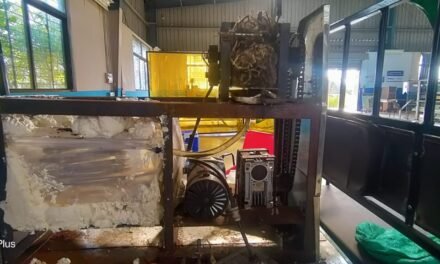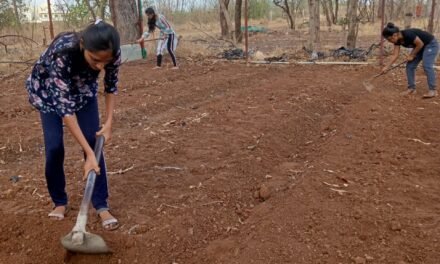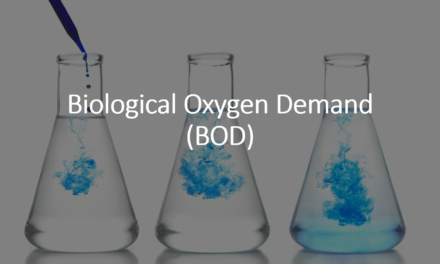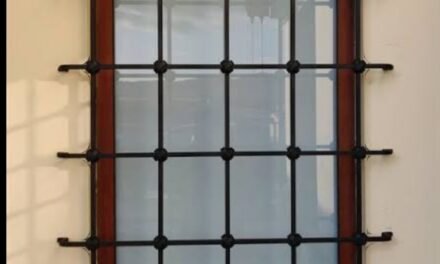DETERMINATION OF N, P, K, Ca, Na, Mg FROM FARM POND
04 April 2021
Set Procedure for Flame Photometer and Water Analysis
Operating Procedure
- Very first step is to ensure the gas tube, air tube, and the drain tube are properly connected.
- Switch on the Compressor. Ensure that the output pressure is close to 0.45 kg/cm2 and is stable.
- Dip the atomizer capillary tube in distilled water. Ensure that regular droplets fall in drain-cup and drain out.
- Open the fuel gas FINE ADJ valve by approximately half turn. ( To ensure this to start with, totally close the valve by turning it fully in the direction of the arrowhead.)
- Switch on the fuel supply from the source/LPG cylinder and immediately ignite flame through the ignition window.
- Watch the flame through the flame view window. Do fine adjustment of fuel flow with the help of the gas control. Valve to get a stable flame having well defined cones.
Once the burner unit is ignited and set follow the steps described here:
- Connect the unit to the mains through its main cord.
- Turn on main power switch Digital display turn on.
- Turn the set FS-COARSE, set FS-FINE, set ZERO COARSE and set ZERO FINE controls in maximum clockwise position.
- Set SENSITIVITY at HI.
- Select appropriate filter with the help of the filter selector of the burner unit.
- Feed distilled water to the atomizer. Wait at least for 30 sec.
- Turn set ZERO COARSE slowly anticlockwise direction till the read of the digital display approaches zero.
- Adjust SET ZERO FINE to achieve precise zero setting.
- Feed standard solution atomizer corresponding to the required full scale. ( wait at least for 30 sec.)
- Set the SENSITIVITY at LO. if the readout is less than 100 is reached with higher sensitivity – MED or HI.
- Turn set F.S. COARSE in anticlockwise direction till 100 is reached. Set FS FINE adjust precise setting.
- Readjust set FS controls to set precise full scale settings.
- Feed sample solution to the atomiser to get the relative concentration. Wait at least for 30 sec. before taking the reading.
07 & 8 April 2021
Preparation of standard and stack solutions.
Sodium (Na) – 100 ppm
Prepare by dissolving 0.2546 g NaCl in one liter of glass distilled water.

100 ppm sodium solution prepared by dissolving 0.2546 g of sodium chloride (NaCl) in one liter of glass distilled water.
Pippet out 10, 20, 40, 60, 80 ml of NaCl sample into 100 ml volumetric flask and make volume by adding distilled water to prepare 10, 20, 40, 60, 80 ppm sodium chloride (NaCl) solution. Calibrate the flame photometer by using this solution. When a flame photometer detects sodium (Na) flame colour changes blue to dark red. Measuring the Sodium (Na) in tap water of VA. Tap water and farm pond contain 18 ppm sodium (Na).
| NaCL Conc. | Readings |
| 10 | 10 |
| 20 | 20 |
| 40 | 38 |
| 60 | 54 |
| 80 | 77 |
| 100 | 96 |

10 April 2021
Preparation of standard and stack solutions.
Potassium (K) – 100 ppm
100 ppm potassium solution prepared by dissolving 0.190g of Potassium chloride (KCl) in one liter of glass distilled water.

Pippet out 10, 20, 40, 60, 80 ml of KCl sample into 100 ml volumetric flask and make volume by adding distilled water to prepare 10, 20, 40, 60, 80 ppm potassium chloride (KCl) solution. Calibrate the flame photometer by using this solution. When a flame photometer detects sodium (Na) flame colour changes blue to red. Measuring the potassium (K) in tap water of VA. Tap water and farm pond contain 48 ppm potassium (K).



| Conc. | R1 | R2 | Avg |
| 0 | 0 | 0 | 0 |
| 10 | 11 | 11 | 11 |
| 20 | 21 | 17 | 19 |
| 40 | 39 | 37 | 38 |
| 60 | 54 | 49 | 51.5 |
| 100 | 81 | 77 | 79 |

13 & 14 April 2021
Preparation of standard and stack solutions.
Calcium (Ca) – 100 ppm
100 ppm calcium solution prepared by dissolving 0.250 g of Calcium carbonate (CaCO3) in one liter of glass distilled water.Pippet out 10, 20, 40, 60, 80 ml of CaCO3 sample into 100 ml volumetric flask and make volume by adding distilled water to prepare 10, 20, 40, 60, 80 ppm Calcium Carbonate (CaCO3) solution. Calibrate the flame photometer by using this solution. When a flame photometer detects Calcium (Ca) flame colour changes blue to red. Due some technical issues while working on the flame photometer. The calcium flame photometer test that we performed couldn’t give us the required results.
16 April 2021
Hence we decided to use another form of calcium carbonate i.e. Chalk. 100 ppm Calcium solution prepared by dissolving 0.250 g of Calcium carbonate (Chalk) 2.5 ml HCl Conc. in one liter of glass distilled water. But this process also does not work.
17 April 2021
Hardness
Aim:
To estimate the amount of total, permanent and temporary hardness in the
collected sample of water.
Principle:
Hardness in water is due to the presence of dissolved salts of calcium and magnesium. It is unfit for drinking, bathing, washing and it also forms scales in boilers. Hence it is necessary to estimate the amount of hardness producing substances present in the water sample. Once it is estimated, the amount of chemicals required for the treatment of water can be calculated. The estimation of hardness is based on complexometric titration. Hardness of water is determined by titrating with a standard solution of ethylene diamine tetra acetic acid (EDTA) which is a complexing agent. Since EDTA is insoluble in water, the disodium salt of EDTA is taken for this experiment. EDTA can form four or six coordination bonds with a metal ion.
1. Total hardness
Total hardness is due to the presence of bicarbonates, chlorides and sulphates of calcium and magnesium ions. The total hardness of water is estimated by titrating the water sample against EDTA using an Eriochrome Black-T (EBT) indicator. Initially EBT forms a weak EBT-Ca2+/Mg2+ wine red coloured complex with Ca2+/Mg2+ ions present in the hard water. On addition of EDTA solution, Ca2+/Mg2+ ions preferably forms a stable EDTA- Ca2+/Mg2+ complex with EDTA leaving the free EBT indicator in solution which is steel blue in colour in the presence of ammonia buffer (mixture of ammonium chloride and ammonium hydroxide, pH 10).
2. Temporary hardness
Temporary hardness is due to the presence of bicarbonates of calcium and magnesium ions. It can be easily removed by boiling. When water is boiled, temporary hardness producing substances (bicarbonates) are precipitated as insoluble carbonates or hydroxides. This precipitate can be removed by filtration. (The filtrate is used in the next step)
3. Permanent hardness
Permanent hardness is due to the presence of chlorides and sulphates of calcium and magnesium ions. This type of hardness cannot be removed by boiling. The filtrate obtained from the above step contains permanent hardness producing substances and is estimated against EDTA using EBT indicator.
Procedure:
The burette is filled with standard EDTA solution to the zero level, following usual precautions.
1. Estimation of Total Hardness
20 ml of the given water sample is pipetted out into a clean conical flask. 5 ml ammonia buffer and 2 drops of EBT indicator are added and titrated against EDTA from the burette. The end point is the change of colour from wine red to steel blue. The titration is repeated to get concordant titre value.
Eriochrome Black-T + Ca2+/Mg2+ Eriochrome Black-T-Ca2+/Mg2+
(Wine red)
Eriochrome Black-T-Ca2+/Mg2+ + EDTA EDTA-Ca2+/Mg2+ + Eriochrome Black-T
(Wine red) (Steel blue)
Eriochrome Black-T + Ca2+/Mg2+ Eriochrome Black-T-Ca2+/Mg2+
(Wine red)
Eriochrome Black-T-Ca2+/Mg2+ + EDTA EDTA-Ca2+/Mg2+ + Eriochrome Black-T
(Wine red) (Steel blue)
Total Hardness = Volume EDTA Solution consumed 1000/Volume of the hard water taken.
2. Estimation of Permanent Hardness
100 ml of the given sample of water is pipetted out into a clean beaker and boiled for 20 minutes. It is then filtered to remove the precipitate formed due to the decomposition of temporary hardness producing salts. The filtrate is made up to 100 ml in standard measuring flask (SMF) using distilled water. 20 ml of the made up solution is pipetted out into a conical flask, 5 ml ammonia buffer and 2 drops of EBT indicator are added and titrated against the EDTA. The end point is the change of colour from wine red to steel blue. The titration is repeated to get concordant titre value.
Permanent Hardness = Volume of EDTA solution consumed X1000/Volume of the boiled water taken
3. Temporary Hardness
The temporary hardness is calculated from the total and permanent hardness.
Temporary Hardness = Total Hardness Permanent Hardness

18 April 2021
By using all these SOP we analysed farm pond water. Which shows the following results.
| Sr. No. | Parameters | Quantity |
| 1. | EC | 349 |
| 2. | TDS | 164 ppm |
| 3. | Potassium (K) | 8 ppm |
| 4. | Sodium (Na) | 21 ppm |
| 5. | Total Hardness | 164 ppm |
| 6. | Permanent | 144 ppm |
| 7. | Temporary Hardness | 20 ppm |
12 & 13 June 2021
Determination of N by using Kjeldahl method
The Kjeldahl method is used to determine the nitrogen content in organic and inorganic samples.
The Kjeldahl procedure involves three major steps:
Digestion – Organic nitrogen is converted into NH4+
Distillation – NH3 is distilled and retained in a receiver vessel
Titration – Nitrogen is determined.
Digestion :
- Place 100 ml sample into a digestion flask.
- Add 5 g K2SO4 of 2 g of the CuSO4 as a catalyst.
- Add 20 ml Sulfuric Acid 98%.
- Carefully suspend the sample by gently swirling the tube.
- Bring the digestion tube/flask and mixture into the digestion unit and into a heating block.
- Heat the mixture (350 – 380 ºC) until white fumes can be seen.
- Continue the heating for about 180 minutes.
- The vapours of water and sulfuric acid are bubbled through a solution of sodium hydroxide (scrubber) to neutralize them.
- The digestion is finished when the sample will be totally transparent with a slightly blue color due to the Cu from the catalyst.
- The sample is allowed to cool to room temperature and neutralize by using 50% of NaOH.
- Then the content of the glass tube is transferred to the distillation unit.
Protein (-N) + H2SO4 (NH4)2SO4 + CO2 + H2O
Distillation
- During the distillation step the ammonium ions (NH4+) are converted into ammonia (NH3) by adding alkali (NaOH). The ammonia (NH3) is transferred into the receiver vessel by means of steam distillation. (NH4)2SO4 + 2NaOH ⇌ 2NH3 (gas) + Na2SO4 + 2H2O
- The receiving vessel for the distillate is filled with an absorbing solution in order to capture the dissolved ammonia gas.
- Common absorbing solutions involve aqueous boric acid [B(OH)3] of 2-4% concentration. The ammonia is quantitatively captured by the boric acid solution forming solvated ammonium ions.
- B(OH)3 + NH3 + H2O ⇌ NH4 + B(OH)4-
Titration
- When using the boric acid solution as absorbing solution, an acid-base titration is performed using standard solutions of sulfuric acid or hydrochloric acid and a mixture of indicators. Depending on the amount of ammonium ions present, concentrations in the range of 0.01N to 0.5N are used. Alternatively the end point can be determined potentiometrically with a pH-electrode. This titration is called direct titration.
- B(OH) 4+ HX ⇌ X- + B(OH)3 + H2O
Calculation
The calculations for % nitrogen or % protein must take into account which type of receiving solution was used and any dilution factors used during the distillation process. In the equations below, “N” represents normality. milliliters of standard acid needed to titrate a reagent blank if boric acid is the receiving solution.
% Nitrogen = (ml standard acid – ml blank) x N of acid x 1.4007 / weight of sample in grams.




